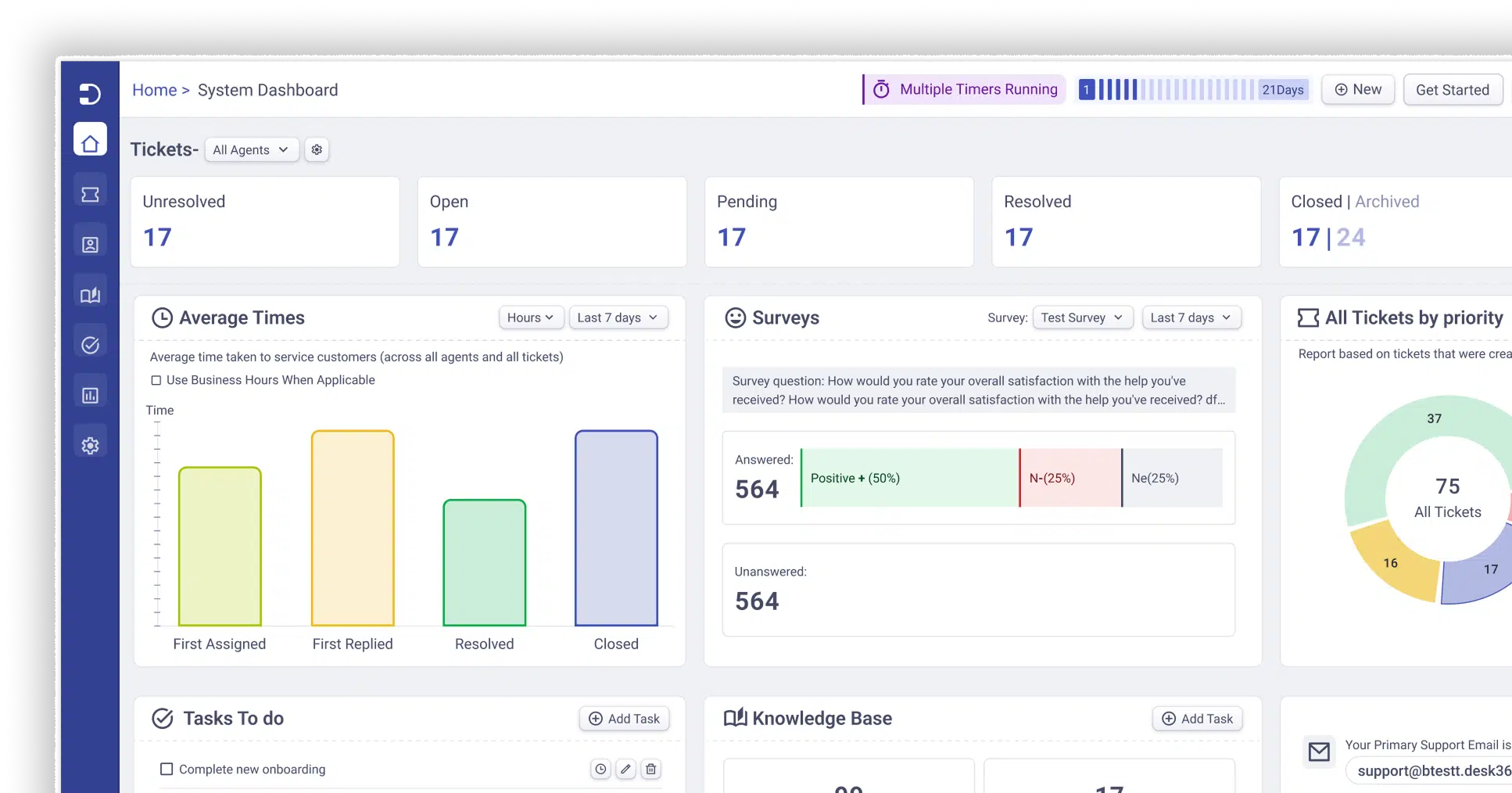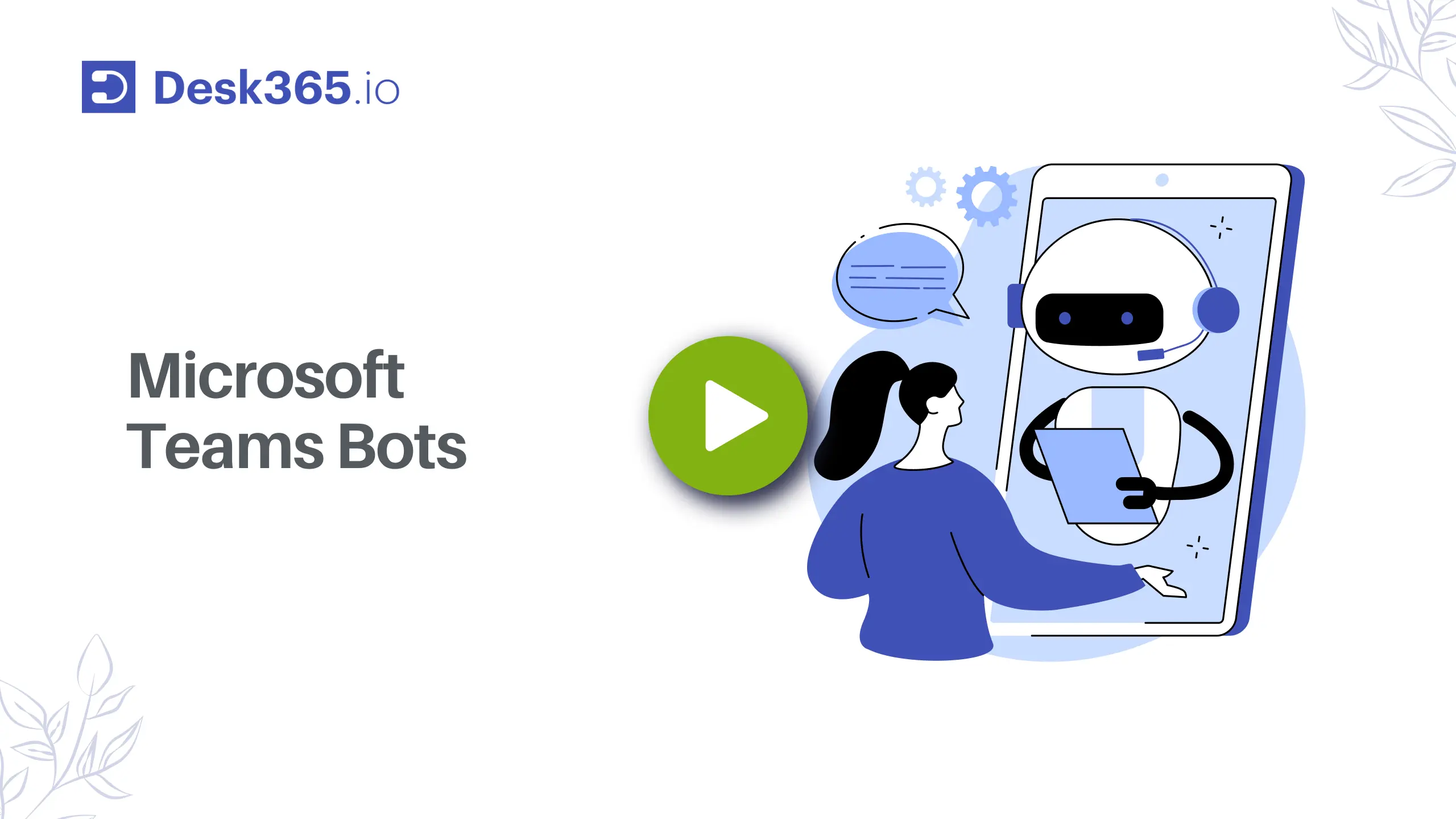Imagine when customers have an issue with a product or service they’re using, like their computer acting up or their internet being really slow.
Instead of just getting frustrated or trying to figure it out on their own, they can reach out to the company’s support team for help.
Whether you’re a small team in a startup or a large team within a corporate giant, addressing customer concerns promptly is crucial for success.
But when customer issues pile up into the hundreds or thousands, how do you organize and prioritize them? This is where support tickets come in handy, giving each customer issue a unique identity.
In this blog post, we’ll delve into what a support ticket is, explore its various types, and look at different ways to resolve tickets faster.
What is a Support Ticket?
A support ticket is a formal way of documenting your problem or request for assistance. It’s like sending a detailed message to the company, saying, “Hey, I’m having this issue, and I need your help to fix it.”
You can create a support ticket through the company’s website, a dedicated support portal, or sometimes even by sending an email.
When you submit a support ticket, it gets assigned a unique number, kind of like a reference code. This number helps the support team keep track of your specific case and makes it easier for them to follow up with you if they need more information or to let you know when the issue is resolved.
The ticket itself contains all the important details about your problem, such as a description of what’s going on, any error messages you’re seeing, and any steps you’ve already tried to troubleshoot the issue. You might also include screenshots or other attachments to help the support team better understand the situation.
Once your ticket is in the system, the support team can review it, prioritize it based on how urgent or complex it is, and assign it to the right person or team to work on resolving your issue. They’ll communicate with you through the ticket, asking for more information if needed or providing updates on their progress.
Why are Support Tickets Important?
Support tickets are crucial for businesses and organizations that provide products or services to customers for several important reasons:
Organized and Centralized Communication
Support tickets act as a centralized hub for all customer inquiries, issues, and requests. Instead of dealing with scattered emails, phone calls, and messages, help desks consolidate all customer communication in one place. This organization prevents inquiries from falling through the cracks and ensures that every customer concern is addressed.
Improved Customer Experience
Support tickets provide customers with a structured and transparent process for seeking assistance from service representatives. Customers can easily submit their issues or requests, receive a unique ticket number for tracking purposes, and stay informed about the progress of their case. This transparency and accountability enhance the overall customer experience, fostering trust and satisfaction.
Efficient Prioritization and Resource Allocation
Support tickets enable support teams to prioritize and triage incoming requests based on predetermined criteria, such as urgency, severity, or impact. This prioritization ensures that critical issues are addressed promptly, while less urgent matters are handled in an appropriate timeframe. Additionally, tickets can be assigned to specific team members or departments based on their expertise, ensuring efficient resource allocation.
Comprehensive Documentation and Knowledge Sharing
Each support ticket contains detailed information about the customer’s issue, the steps taken to resolve it, and any relevant communication or attachments. This documentation serves as a valuable knowledge base, allowing support teams to refer past cases, learn from previous resolutions, and improve their problem-solving skills over time. Additionally, this knowledge can be shared among team members, facilitating cross-training and consistent customer service.
Performance Monitoring and Reporting
Support ticket systems typically provide metrics and reporting capabilities that allow organizations to track key performance indicators (KPIs) such as response times, resolution rates, and customer satisfaction scores. This data-driven approach enables organizations to identify areas for improvement, optimize their support processes, and ensure they are meeting service level agreements (SLAs) or internal targets.
Accountability and Quality Control
Support tickets create a paper trail of all customer interactions, which can be reviewed for quality control purposes. Supervisors or quality assurance teams can evaluate the handling of tickets, assess the effectiveness of resolutions, and provide feedback or additional training to support staff when necessary.
What is a Support Ticket System?
Imagine you have a problem with a product or service you’ve purchased, like your internet is not working properly or your new gadget has a glitch. Instead of just calling the company and hoping someone can help you, a support ticket system provides a structured way for you to report your issue and get assistance.
A support ticket system is a special software or online platform that allows customers like you to log their problems or requests for help. It’s like sending an email to the company, but instead of it getting lost in their inbox, it gets turned into a “ticket” that gets tracked and assigned to someone who can work on resolving your issue.
When you submit a request through the support ticket system, you’ll typically provide details about your problem, such as what’s going wrong, any error messages you’re seeing, and steps you’ve already tried to fix it. You might also attach screenshots or files to help explain the situation better.
Once you’ve submitted your request, the support ticket system will give you a unique ticket number, kind of like a reference code. This number helps the company keep track of your specific case and makes it easier for them to find all the information about your issue quickly.
The cool thing about a support ticket system is that it organizes all the customer requests in one place, so the company can easily see what needs to be worked on and prioritize the most urgent or important issues. They can also assign different tickets to specific support staff members based on their expertise.
As the company works on resolving your problem, they can use the support ticket system to communicate with you, ask for more information if needed, or provide updates on their progress. All of these interactions and notes get logged in your ticket, so there’s a complete record of everything that’s been done to help you.
Overall, a support ticket system acts like a virtual helpdesk, making it easier for companies to manage and respond to customer inquiries and issues in an organized and efficient manner. It helps ensure that no requests fall through the cracks and that customers get the assistance they need in a timely way.
What are the Key Elements of Support Ticket?
Here are the key elements that typically make up a support ticket:
1. Unique Ticket Number
Each support ticket is assigned a unique identification number or code. This number helps track and reference the ticket throughout its lifecycle.
2. Customer Information
The ticket includes basic details about the customer, such as their name, contact information (email, phone number), and any relevant account or customer ID numbers.
3. Issue Summary
A brief, concise summary or title that describes the nature of the issue or request being submitted. This helps support staff quickly identify the problem.
4. Issue Description
A detailed description of the issue or request being submitted. Customers are encouraged to provide as much relevant information as possible, including error messages, steps to reproduce the problem, and any troubleshooting attempts made.
5. Priority Level
Support tickets are often assigned a priority level based on the urgency or severity of the issue. Common priority levels include low, medium, high, and critical.
6. Category or Type
Tickets may be categorized or classified based on the type of issue or the product/service area it relates to, such as billing, technical support, feature requests, etc. This aids in routing tickets to the appropriate support team.
7. Attachments
Customers can attach files, screenshots, logs, or other relevant documents to the ticket to provide additional context or evidence of the issue.
8. Due Date or Service Level Agreement (SLA)
Depending on the priority or issue type, a target due date or SLA may be assigned, indicating the expected timeframe for resolution.
9. Status
The ticket status reflects its current stage in the resolution process, such as new, open, in progress, on hold, or closed.
10. Assigned Agent or Group
The support staff member or team responsible for working on and resolving the ticket.
11. Communication Log
A chronological record of all communication between the customer and support staff related to the ticket, including responses, updates, and any additional information exchanged.
12. Resolution Details
Once the issue is resolved, the ticket should include details about the solution provided, any workarounds or steps taken, and any additional information that may be helpful for future reference.
13. Customer Satisfaction Rating
Some support ticket systems allow customers to provide feedback or rate their satisfaction with the resolution process after the ticket is closed.
These elements work together to create a comprehensive record of the customer’s issue, the actions taken to address it, and the overall resolution process. Having a well-structured support ticket system helps organizations provide efficient and organized customer support.
What are the Best Practices for Managing Support Tickets?
Here are some tips to help resolve support tickets faster:
1. Automate Repetitive Tasks
Use automation tools to handle repetitive tasks, such as acknowledging receipt of a ticket or routing tickets to the appropriate departments. Automation can significantly reduce response times by immediately addressing common issues or routing complex ones to the right agents.
2. Categorize and Prioritize Tickets
Properly categorizing and prioritizing tickets ensures that urgent issues are addressed first, and similar issues can be handled in bulk. By setting up categories and priority levels, you can streamline the workflow and address the most critical tickets promptly.
3. Utilize Canned Responses
Canned responses are pre-written replies for common queries or issues. Using them saves time by providing quick, consistent answers to frequently asked questions. Customize canned responses as needed to make them more personalized.
4. Provide Self-Service Resources
Offer a comprehensive knowledge base, FAQs, troubleshooting guides, and instructional videos to empower customers to find solutions themselves. This can reduce the influx of simple or repetitive tickets, allowing support staff to focus on more complex issues.
5. Set Response Time Goals
Establish and monitor response time goals or service level agreements (SLAs) based on ticket priority levels. This helps ensure that customers receive timely acknowledgments and updates, fostering transparency and trust.
6. Offer Multi-Channel Support
Provide customers with multiple channels to submit and track tickets, such as web forms, email, live chat, or social media. This flexibility caters to customer preferences and can improve their overall experience.
7. Analyze Ticket Data
Regularly review ticket data, such as resolution times, common issues, and recurring themes, to identify bottlenecks or opportunities for process optimization, knowledge base updates, or product improvements.
In conclusion, effectively managing support tickets is crucial for any business that wants to provide excellent customer service. A well-organized ticketing system helps resolve issues promptly, fosters customer satisfaction, and ultimately contributes to business success. By utilizing the right tools and approaches, companies can ensure their support processes








